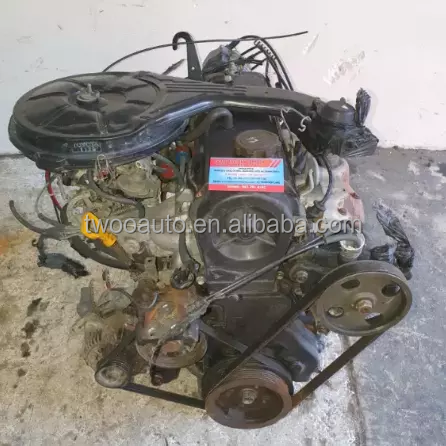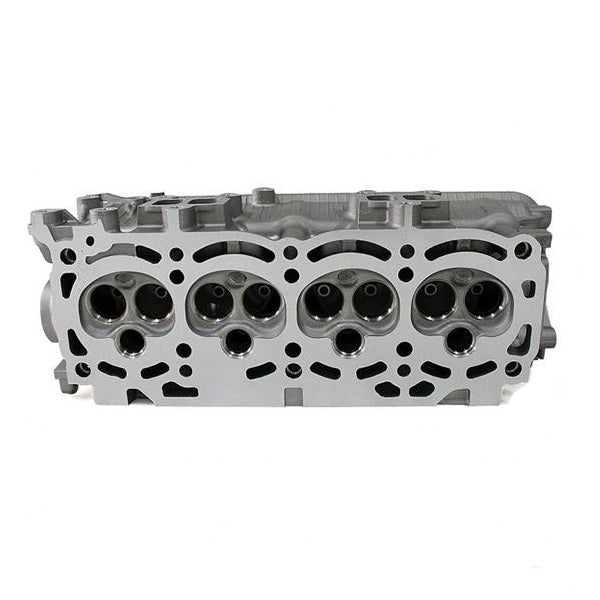What Makes the Toyota Tazz a Great Option for Budget-Friendly Transportation
What Makes the Toyota Tazz a Great Option for Budget-Friendly Transportation
Blog Article
Check Out the Latest Fads in Engine Modern Technology Through Tazz
In the swiftly developing landscape of automotive modern technology, Tazz stands at the forefront, highlighting considerable advancements in engine systems that focus on both innovation and sustainability. tazz. From hybrid engines that enhance gas efficiency to the appearance of hydrogen fuel cells, the fads forming contemporary powertrains are not just boosting efficiency but additionally attending to important environmental challenges. As the industry remains to press borders, it is vital to consider just how these advancements will influence future transport options and the wider implications for global power consumption. What exists ahead in this pivotal change?
Crossbreed Engine Innovations
Crossbreed engine innovations represent an essential change in auto modern technology, integrating the benefits of interior combustion engines with electrical propulsion systems. This combination not only enhances gas effectiveness but also minimizes exhausts, conference progressively stringent environmental laws. By making use of both energy sources, hybrid engines can optimize efficiency, providing power when required while conserving fuel during much less requiring driving conditions.
Current developments in hybrid innovation include renovations in battery efficiency and regenerative stopping systems. These innovations permit higher power healing during deceleration, which can be redirected to aid in acceleration or power auxiliary systems. Additionally, suppliers are focusing on lightweight materials and compact layouts to make best use of the effectiveness of crossbreed powertrains.
The growth of plug-in crossbreeds has additionally broadened the marketplace, making it possible for drivers to bill their lorries using typical electric outlets. This feature often permits significant all-electric variety, more decreasing dependence on conventional fuels. tazz. As the auto market remains to develop, hybrid engine technologies are anticipated to play a vital duty in connecting the gap in between conventional lorries and completely electric designs, offering a transitional solution that accommodates diverse consumer requirements and choices
Advancements in Electric Powertrains
The automotive landscape is swiftly advancing, with electrical powertrains arising as a leading force in lasting transportation. Developments in electric lorry (EV) modern technology are considerably boosting performance, efficiency, and individual experience. Trick technologies consist of renovations in battery chemistry, which have boosted energy density, minimized billing times, and extended overall battery life.
Solid-state batteries, for example, guarantee to revolutionize the marketplace by offering higher safety and efficiency compared to conventional lithium-ion cells. Furthermore, improvements in regenerative stopping systems are making it possible for lorries to recoup power throughout deceleration, adding to overall effectiveness.
Along with battery innovation, electrical motor designs are becoming much more sophisticated. Advancements such as incorporated electric motors and advanced thermal monitoring systems are helping to optimize power distribution and minimize weight, ultimately enhancing car characteristics.

Collectively, these advances highlight the dedication to transition in the direction of cleaner, a lot more effective transportation remedies, positioning electric powertrains at the leading edge of automobile technology.
The Increase of Hydrogen Fuel Cells
Increasingly, hydrogen fuel cells are acquiring grip as a feasible option to conventional inner burning engines and battery electrical lorries. This technology takes advantage of the chemical energy kept in hydrogen, converting it right into electricity via an electrochemical response with oxygen. The key byproduct of this process is water, making hydrogen fuel cells an eco-friendly option with no emissions at the tailpipe.

Car manufacturers are increasingly spending in hydrogen fuel cell technology, recognizing its capacity for long-range applications and fast refueling capacities that rival traditional fuels. Additionally, sectors such as heavy-duty transport and public transit are particularly well-suited for hydrogen gas cells, where battery electric services might fall short because of weight and range limitations.
As research study and financial investment proceed to increase, hydrogen gas cells are positioned to play a significant function in the future landscape of tidy transport and energy services.
Enhancements in Internal Combustion Engines
Innovations in interior burning engine (ICE) innovation are transforming traditional lorries to fulfill modern ecological standards and performance assumptions. One of one of the most substantial improvements entails the assimilation of advanced fuel shot systems. These systems optimize the air-fuel blend, boosting burning efficiency and causing lowered exhausts. Direct gas injection, for example, permits for better webpage atomization of gas, resulting in more complete burning and enhanced power outcome.
Furthermore, turbocharging has actually acquired prestige, permitting smaller engines to deliver greater efficiency without the weight of larger engines - tazz. This innovation not just increases effectiveness however also adds to lower fuel usage. Variable shutoff timing systems are additionally being refined, enabling engines to adjust to various driving conditions for improved torque and responsiveness
Additionally, the usage of lightweight materials in engine building and construction is coming to be conventional, further enhancing gas performance by decreasing general automobile weight. Engine control devices (ECUs) are progressively sophisticated, making it possible for real-time adjustments that maximize performance and emissions.
These improvements jointly indicate a crucial hop over to these guys change in ICE innovation, straightening with global sustainability objectives while still providing the efficiency drivers expect from their cars. As the industry advances, these renovations remain to shape the future of conventional auto engineering.
Future Trends in Engine Efficiency
Substantial innovations in engine efficiency are expected as producers focus on integrating advanced technologies to fulfill rigid environmental regulations and customer demands. The change in the direction of electrification, hybrid systems, and different fuels is reshaping the automobile landscape, driving innovations that enhance gas economy and lower emissions.
One of the vital trends is the implementation of innovative products and producing methods. Light-weight composites and high-strength alloys add to lowered lorry weight, therefore improving total performance. In addition, the adoption of turbocharging and variable shutoff timing technologies permits boosted power output from smaller sized engines, better enhancing gas economic climate.

Verdict
Technologies in hybrid engine like it systems, electric powertrains, and hydrogen fuel cells show a dedication to decreasing emissions while enhancing efficiency. Improvements in interior burning engines and an emphasis on lightweight products contribute to general engine effectiveness.
From crossbreed engines that optimize fuel performance to the appearance of hydrogen gas cells, the fads shaping modern-day powertrains are not just boosting performance but also resolving essential ecological difficulties.Hybrid engine developments represent an essential change in automotive modern technology, incorporating the advantages of internal burning engines with electric propulsion systems.Furthermore, turbocharging has obtained prominence, enabling smaller engines to deliver higher efficiency without the weight of bigger engines. Additionally, the adoption of turbocharging and variable valve timing modern technologies enables for improved power output from smaller sized engines, even more enhancing gas economic situation.
Enhancements in inner combustion engines and a focus on light-weight materials add to general engine performance.
Report this page